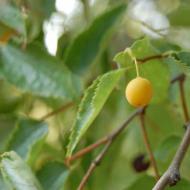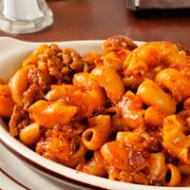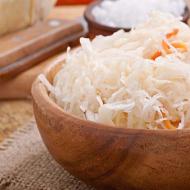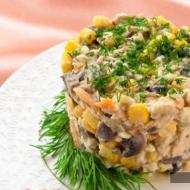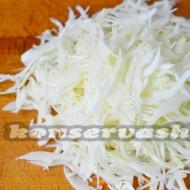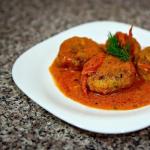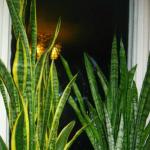
Ornamental trees and shrubs to give. Nature's Miracle - Stone Wood
lat Celtis
Family Ilmovye (Ulmaceae)
Trees, rarely shrubs, as a rule, deciduous; only some subtropical and tropical species are evergreen. The leaves are alternate, double-spaced, simple, whole, dense, rough, asymmetrical at the base, with three main veins extending from the base to the top, serrated or almost entire. Petioles rather long, pubescent. The flowers are twofold: bisexual and same-sex. Male flowers appear on young shoots, have 4-7 stamens in each flower and are collected in bunches in the lower part of the annual shoot. Bisexual flowers are placed in the leaf axils, in the upper part of the shoots; they have 4-7 stamens and a single nest with two large stigmas. Perianths in bisexual and male flowers 4-7 (7) -lope. The fruit is a small spherical or ovate drupe with a thin, sweetish coat; a seed is placed in a wrinkled or cellular bone. Blossom simultaneously with the blooming of the leaves. The fruits ripen in the fall and keep on the branches long after the leaves fall. The trees have very strong wood. Durable.
Kinds:
African frame (Celtis africana)
Southern / Common framework (Celtis australis)
It is close to the Caucasian frame, but grows into a larger and more slender tree (up to 15–20 m high), with a dense spherical crown. Leaves 4–8 cm long, ovate-lanceolate, coarse toothed, long-acuminate to the apex, sickle-shaped, softly pubescent, green above, gray-green below. Fruits are dark purple or almost black, spherical, up to 1.6 cm in diameter, edible.
In youth, it grows quickly, has low soil requirements, tolerates its salinity, is very drought-resistant and quite cold-resistant (tolerates a decrease in temperature to –25 °); it is also resistant to smoke, gases, wind, forms a powerful root system and gives abundant root scions. Wood high technical qualities. Durable - lives up to 500 years. Application. One of the most stable breeds for dry areas of the south of Russia: for street plantings, tapeworms and group planting in gardens and parks, as well as for creating arrays in combination with other breeds or in clean (single-species) plantings. It is also suitable for shelter plantations on chernozem and dark chestnut soils in southern Russia. Particularly suitable for planting dry, stony slopes and scree.
Frame Bunge (Celtis bungeana)
Tree up to 15 m tall with smooth, light gray bark. Petioles up to 1 cm long. The leaves are oval or oblong-oval, 4-8 cm long, pointed and usually rounded and curved at the base, marginally toothed along the edge, bright green, naked. The fruits are almost round, up to 0.7 cm in diameter, fleshy, purple-black.
Caucasian carcass (Celtis caucasica)
A small tree, up to 10-12 m high, or a tall shrub, up to 5 m high, with irregular ovate crown and gray smooth bark of the trunk and reddish-brown young shoots. The leaves are oval, with a short-pointed top, grayish-green; mature leaves naked from above, harsh fluffy from below. Fruits globose, about 1 cm in diameter, with a sweet shell of a dark reddish-brown color with a bluish bloom, edible. In youth, it grows quickly, light-requiring, undemanding to the soil, drought-resistant, but not cold-resistant. Stable in urban environments. Propagated by seed, layering and cuttings. The wood is very durable. Application. As a very drought-resistant breed, the skeleton of the Caucasus is valuable for landscaping dry mountain slopes, scree, in wind-shelter belts, as well as for landscaping inhabited places in arid southern regions. In gardens and parks used in the form of tapeworms and in groups.
Chinese frame (Celtis chinensis)
Tree up to 20 m tall. Petioles about 1 cm long. The leaves are broadly oval or oblong-oval, widely wedge-shaped at the base, crenate-toothed along the edge, dark green and almost smooth from above, mesh and almost bare from below. Fruits are single, dark orange.
Shrub or small tree up to 3 m tall, with spines on the branches, although it can grow in the tropics. The leaves are small, less than 3 cm long and 2 cm wide. Flowers in complex umbrellas, umbrellas of 3-5 flowers. Drugs orange, yellow or red, juicy, ovate, about 7 mm in diameter, edible for humans and animals.
Cage naked (Celtis glabrata)
Small (up to 15m) tree or shrub. The leaves are ovate or rhombic, 4–7 cm long, melkopilchatye, naked on both sides, yellowish-green. Fruits are reddish or orange-yellow with a bluish bloom, edible seeds. Drought-resistant and undemanding to the soil, like the previous species, as well as stable in urban environments.
Frame (Celtis mildbraedii)
A large tree, often with supporting roots at the base of the trunk. The bark is smooth, light brown in color. Branches are often marked with pale lentils. The leaves are oblong, 5-17 cm long, glossy, green, the edges are large and unevenly toothed in the upper half, the bases are slightly asymmetrical. Flowers in small axillary racemes, greenish. Fruits 1.2 cm, fleshy, red.
Western frame (Celtis occidentalis)
At home, in the best conditions - a tree up to 40m in height, with freely growing trees, the crown is broadly ovate. The bark of the trunk is fissured, dark brown. The leaves are large (5–15 cm long), oval or oblong-ovate, with a pointed tip serrate on the edges, smooth, shiny, light green from above, lighter, bare or slightly pubescent from below. Fruits globose, up to 1 cm in diameter, from orange-red to dark purple. It grows quickly to 10-15 years, later growth slows down dramatically. Very drought-resistant and resistant to urban conditions. Of all the species cultivated in Russia, the most frost-resistant. Light-requiring, like other species. Application. In urban areas suitable for tapeworms and group plantings in squares, gardens and parks. For ordinary street plantings of little use, as it forms an ugly, irregular crown. Very suitable for landing on dry rocky slopes. It is suitable as a companion breed for field shelter plantations in the steppe part of the Northern Crimea, Azov and North Caucasus. Areas of application: arid steppe regions of the south-east of the European part of Russia, the North Caucasus.
Western heart-shaped framework (Celtis occidentalis var. Cordata)
Tree up to 16 m tall with heart-shaped leaves.
Mesh frame (Celtis reticulata)
Broad, deciduous tree 8 m tall and wide or shrub. The leaves are thick, oblong or oval, usually solid, sometimes toothed, 10 cm long, bright green above and darkly pubescent below. The flowers are small, green. Fruits are edible, orange-red, 1 cm in diameter, when ripe mature purple.
Thorny frame (Celtis spinosa)
Tree. The branches are zigzag, almost sinusoidally curved and there is a thorn on each ledge. Petioles up to 0.4 cm long. The leaves are almost evergreen, alternate, elliptical, pointed. Flowers axillary, small, greenish, solitary. Fruits are drupes, round, yellow-orange, 0.5 cm in diameter, edible.
Thin-leaf frame (Celtis tenuifolia)
Shrub or small tree 2-12 m tall. The leaves are alternate, simple, oblong-ovate, thin, 5-7 cm long and 2-3.5 cm wide, finely toothed along the edge, finely pubescent. The flowers are bisexual or same-sex, single or collected in small brushes. Fruits - berry-like drupes up to 0.8 cm in diameter, edible.
Fourfold frame (Сeltis tetrandra)
Tree up to 30 m tall, deciduous or evergreen sometimes. The bark is greyish-white. Sprigs densely pubescent, yellowish-brown, brown at a young age, usually becoming bare with age. Scape 0.6–1.3 cm long, brown, broadly striated. Leaf plates ovoid-elliptical, ovate-lanceolate or almost rhombic, 5-13 cm long and 2.5-5.5 cm wide, oblique at the base on one side, almost round or tapered, solid or stupidly serrated edges, with 0- 13 teeth on each side, at the apex pointed or tail-pointed. Flowers in bunches, occasionally in brushes 2-3. Drugs yellow, orange when ripe, almost spherical, 7-8 mm in diameter.
Frame Current (Celtis toka / integrifolia / Ficus toka)
Large, broad, deciduous, monoecious tree 25 m tall with light gray, smooth or scaly bark. Leaf blades are widely oval, 4.6–7.8 cm long and 3.5–4.8 cm wide, shortly pointed, rounded or nearly heart-shaped at the base, usually solid, sometimes serrated. Scutes 1-2 cm long with flowers, with fruits about 4 cm long. Brush with male flowers axillary and several end brushes with bisexual flowers on pedicels 0.3 cm long. Stamens about 0, 25 cm long, pubescent. The fruits are almost round to 1.1 cm long and 1 cm in diameter.
Tournefort Frame (Celtis tournefortii)
Shrub, rarely a tree of the third size. Young branches are light brown or yellowish, bare or absent-wavy. Leaves are unequal, ovate or ovoid-oval. Their base is rounded or obliquely cut, the apex is short-pointed, gray or gray-green, bare at the top, rough to the touch, densely fine-hairy below, 4-7 cm long, 3.5-5 cm wide, on pubescent petiole. The fruit is brownish-yellow, on a lightly pubescent or sometimes bare stem that is almost twice as long as the leaf petiole.
Spread. Caucasus (South Transcaucasia), Balkan Peninsula, Asia Minor.
I used to be afraid to plant it on the ground, but a year ago I gave the river Miha Yosefi my tree, which grew by self-seeding in a flower pot in my yard. I was afraid even to ask what became of him. And when we came to look at the forest we planted last year in the fall, I went to look for him, not thinking to find him. And suddenly, in a year, the sapling of the sapling, which was waving more than a meter more than a meter, found out in amazement. He went much better than the CCL chakhliks, with that minimum watering,
who provided the host. This year, I have already boldly ordered 50 skeletons in the CCL.
Already even in the newborn community (Nature of Eretz Yisrael) they managed to get a little confused between 2 wonderful relatives, who both grow in Israel and are actively used in urban greening and in parks: elm and carcass.
Both are from the elm family. Both are sometimes called elmas. But there are a lot of elm trees and skeletons, with the difference being fundamental in the form of fruits. If at elms it is flying wings, at frameworks the fruit is edible, tasty and healthy drupe. In Tyrol, the national sweetness is made from the fruits of the frame. Not encountering hitherto unequivocal references to the presence of an eastern elm in the indigenous (primeval) deciduous forest of the Land of Israel, I have already read in many sources that Karkas is the aboriginal of this Earth. Broad-leaved and mixed coniferous-broad-leaved forests that met our ancestors here when entering Earth, included, among other things, the thicket of the Iron tree or the southern framework. Even Russian encyclopedias are called the birthplace of this wonderful Mediterranean tree. Therefore, it is a shame to read the reports of the northerners of Israel, who managed to find more than 5 species of white mushrooms in the deciduous forests of Galilee and Golan, and declared that we don’t wait for the center in the center. The artificial pine forests of the center, they say, will give you boletus butterut ferry and some mushrooms, and everything. The center of the country is not less than the North has the right to the presence of mixed and deciduous forests, maybe with a very small difference in species. And I hope that in 50 years we will also collect in the center whites under our oaks, laurels, Pistachios, plane trees and carcasses. And looking at the oaks that are now rising everywhere in Shomron, I really want to show the “northerners” a big and ill-mannered tongue. What have you eaten? Give us only time!
Frame Celtis australis מיש דרומי
Ulmaceae family
Title.: the ancient Roman name of the tree,
Description:.genus includes up to 70 species growing in the tropical, subtropical and temperate zones of the Northern Hemisphere.
Trees, rarely shrubs, with a rounded crown. The leaves are alternate, oval or narrowly ovate, beveled at the base and serrated along the edge, very rigid, up to 15 cm long. Small nondescript flowers appear simultaneously with the blooming of the leaves. Fruits - drupes with thin, dryish pulp, long preserved on the branches after leaf fall. Light-requiring. Drought tolerant and thermophilic. Low soil requirements. Resistant in urban environments. All kinds of decorative their greens and partly in the fruit.
The frame is southern, or ordinary ("Stone tree").- C. australis L.
Under natural conditions, it is distributed in arid regions of southern Europe, North Africa and Asia Minor.
Tree up to 20 m tall, with a straight trunk, with a dense spherical crown. Leaves up to 8 cm, ovate-lanceolate, coarse toothed, long-acuminate towards the apex, softly pubescent on both sides, green above, gray-green below. Fruits are dark purple, almost black, spherical, up to 1, b cm in diameter, edible.
In his youth, growing rapidly. Lives up to 500 years. Drought resistant Windproof. It is reconciled with salinity. It withstands temperatures as low as -25 "C. It grows well in street plantings. Recommended for landscaping streets, single and group plantings, creating arrays on dry slopes in southern Russia.
Relative-Caucasian framework. - S. caucasica willd.
Iron tree (one of) - 1) frame, stone tree, mould (Celtis australis L., S. caucasica Willd. And C. Tournefortii Lamk) from this. carcass (Celtideae, Gaudich) - trees 50 - 60 ft. tall, wildly growing in the Crimea and mainly in the eastern part of the Transcaucasus, in dry areas, on the open slopes of the mountains, in a strip of up to 4000 ft., mostly along the edge of the forest. It is light-requiring, not demanding in relation to the soil, tree species, easily propagated by seeds, cuttings and layering, and therefore recommended for afforestation on soils suffering from lack of moisture.
Wood.
Coarse-grained, greenish-yellow wood, with a grayish-brown core, is distinguished by high density, strength, hardness, weight (specific gravity 0, 78), flexibility, elasticity, strength and well polished, and therefore used for carpentry ireznyh products, wind instruments, carriage skills, in the manufacture of cuttings of knives, walking sticks and other small items, as well as on stakes, grape poles, hoops, etc .; bark goes on tanning and dyeing leather; fruits are edible; oil is extracted from the seeds, resembling almond taste; the young leaves constitute the perfect forage for livestock, especially goats, and they feed on mulberry worms.
Application and use.
3. Harvest fruits after they ripen; roots - in the fall or in the spring, prior to the beginning of the vegetative period.
4. Fruits contain oil (0.4%), sugars (25%), organic acids (0.4%), pectin substances (0.3%), tannins (5%), coloring matter (0.15% ), mineral salts (3.5%), vitamins B1, B6 and C.
Application.
Broth: 200 g of crushed roots and fruits (1: 1) of stony wood per 1 liter of water are boiled for 15 minutes, infused for 1 hour, filtered. Take 250 ml 4 times a day for diarrhea, dysentery and as a prophylactic agent to strengthen the cardiovascular system and increase the body's defenses.
The fruits of stony wood are eaten.
Used as an amulet and beads from the fruit (
stone tree) or framework of the south, a relative of elm (Celtis australis). In Judea and Samaria, this tree is considered sacred, and its healing round fruits are attributed to its firm round fruits. Sometimes these beads are worn by children or pets.
In addition to the use of young branches for livestock feed, the birds also love the fruits of this tree. The fruits have a delicate sweet taste. Birds, eating fruits during the ripening period, are the main assistants in spreading the tree, since they do not damage the solid fruit bone when eating, and she spreads them with feces away from the parent tree. Unfortunately, in the first years of life, the frame requires organic cover, water, protection and shading. Therefore, it does not germinate on bare slopes. But it sprouts beautifully in irrigated areas and in gardens and forests. The optimal way to accelerate the return of the frame to our Earth is a semi-cultural way of landing close to human habitation. When planting a sprouted sapling and caring for it in the first few years of life (until good rooting), the grown and rooted tree will eventually be able to quite comfortably exist on its own, without watering and care. The versatility of the benefits of this tree and the ease of its cultivation make the frame indispensable for organic, ecological and Permoculture farms in Israel. (edible, medicinal, fodder, has excellent industrial wood, a good air purifier, is decorative, is considered a Kodesh tree, sacred)
No ornamental plot can do without decorative deciduous trees and shrubs. They are as popular as flowers, and moreover, they do not require such thorough care. Another plus of ornamental shrubs for summer cottage is a one-time landing for many years. When creating favorable conditions, ornamental trees and shrubs will delight you for many years.
For some reason, some of them are not considered easy to care for, although they fall into the category of such plants. The fact is that some ornamental shrubs for the garden have features on which their successful cultivation in the garden depends. The conditions are simple, but not everyone knows about it. So it turns out that the plant falls into the category of "moody", not adapted to our climate.
Below we offer to get acquainted with the photos and the names of ornamental shrubs and trees, as well as recommendations for their care.
Decorative deciduous tree Canadian maple

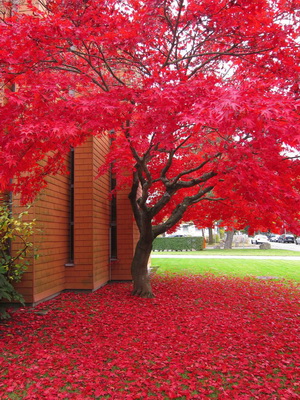
The Canadian maple is a tall tree with dark red, or rather dark cherry leaves. It is very decorative. At the same time, leaves become so beautiful if they are periodically illuminated by the sun during the day. In the shadows, they are almost black. The tree basically grows upwards, so if you want to get a beautiful crown shape, the maple needs to be pruned often. Winters this tree carries well, but it all depends on the place of his landing. He "dislikes" certain directions. Maple can freeze if you plant it on the north side of any building and close to the basement, and also if you do not cut off its non-woody shoots for the winter. If in the autumn the maple will give a lot of shoots, its winter hardiness may sharply decrease.
Blooming ornamental shrub for forsythia garden
Forsythia blooming ornamental shrubs are not uncommon in our gardens, and it will delight you with one of the first beautiful inflorescences. But for many, it never blooms, despite feeding, caring, caring. Here in the dressing the whole thing. This ornamental shrub for the garden loves poor soil, only on it it will bloom. On rich soil, it will produce only leaves and abundant shoots, which also reduce the winter hardiness of the plant. As a result, forsythia freezes. The conclusion is: put on poor soil and be sure to make the minimum shelter for the winter (cover of lutrasil).
Decorative flowering shrub rhododendron (with photo)
Flowering ornamental shrubs rhododendron frost is not afraid, but it is afraid of strong winds and dryness. He can "freeze" from strong winds in winter. That's why you need to cover him tightly for the winter, so that the shelter is windproof.
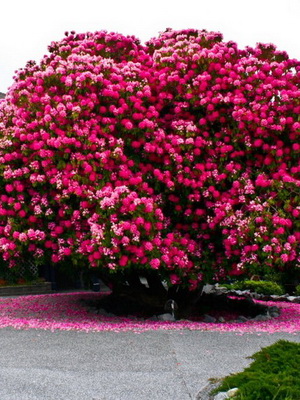

Pay attention to the photo of this blooming ornamental shrub: around the rhododendron exhibit a construction of reinforcement, throw lutrasil, and on top - polyethylene. And all this is tightly tied up below so that the wind does not penetrate. In the spring, this shelter is removed as early as possible so that the rhododendron gets moisture. Throughout the season, it is plentifully watered and the leaves are moistened with a spray or poured from a watering can - this should be done every day. If the bush grows in the wind, he needs to make a backstage of plants or put a garden partition. Rhododendron will not grow and bloom on alkaline soil. And this kind of soil basically exists in gardens, as most plants need this. Therefore, selectively changing the soil to a sour soil at the rhododendron planting site, and then, so that it does not become alkalized over time, three times a year, the rhododendron is fertilized with a special fertilizer for rhododendrons and peat is added. That's when your rhododendron will give you a lush flowering.
The best varieties of rhododendrons for the middle band:

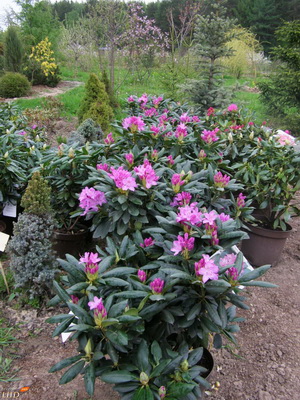
Katevbinsky;
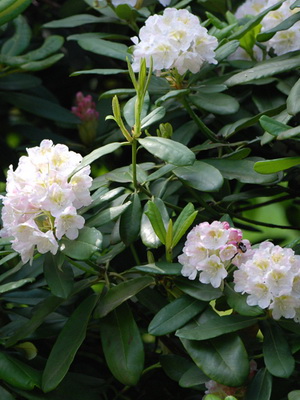
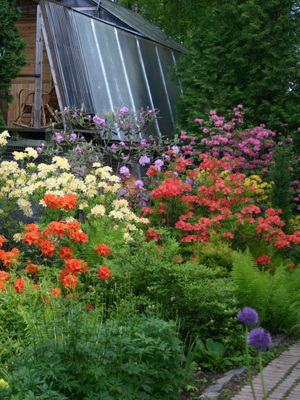
short-fruited;
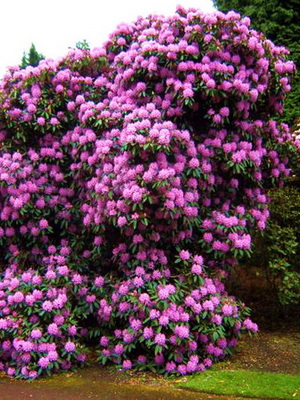
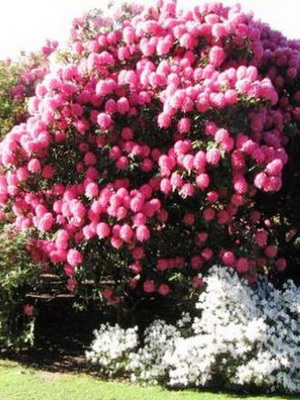
the largest;
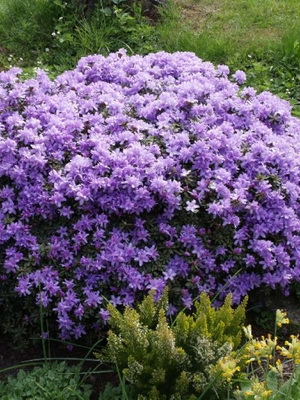
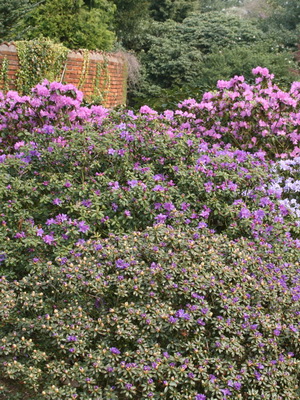
dense;
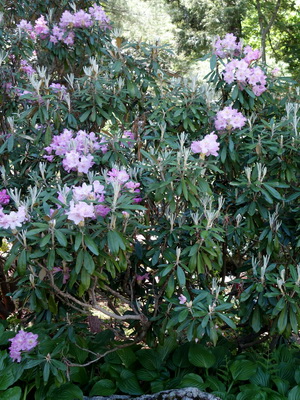
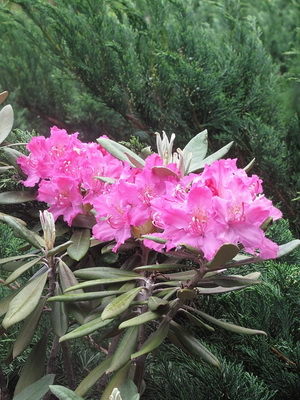
Smirnova;


rusty;


sea buckthorn;

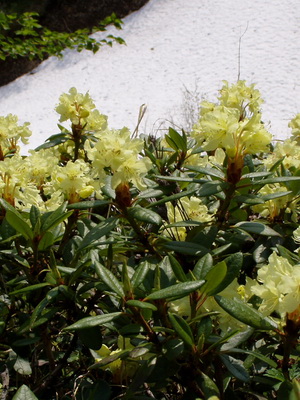
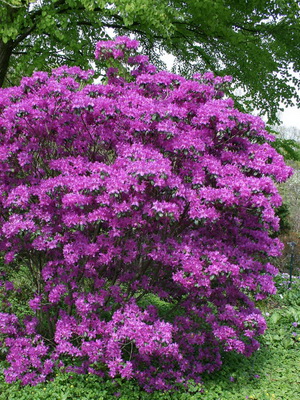
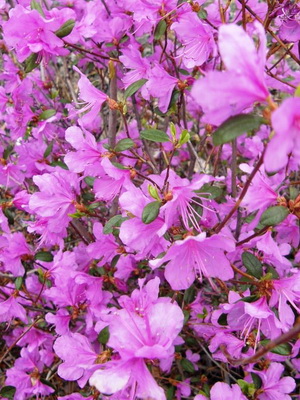
dahuri;

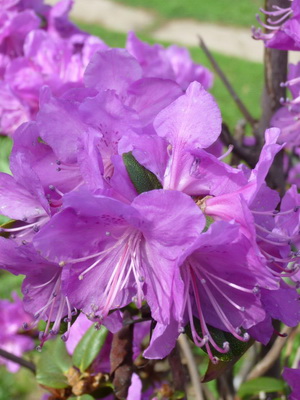
What is a stone tree? Can a plant be made of stone? Or is it just that the shape of the stone resembles a tree? It is worth to understand this. Of course, it does not consist of a stone. There are two plants that are called stone trees: boxwood and the southern framework. Here about them also the speech will go.
Frame ordinary (southern)
The frame, or stone tree, has more than 50 species. Most often it is deciduous plants, but sometimes evergreens. There is a frame in the form of a shrub. It grows in the tropics, subtropics and temperate zone of the Northern Hemisphere. What is the shape of the stone tree? has a rounded shape. The leaves are oval (up to 15 cm), elongated, with small notches. The structure of the leaves is very rigid.
The frame is adapted to arid stony soil prone to salinity. He is very thermophilic. Also, the frame is well acclimatized in urban environments, used for decorative purposes.
Where is the stone tree
Under natural conditions, the framework is found in the south of Europe, in the north of the African continent and in some Asian countries. Small frame trees grow in the Crimea, in the east of the Caucasus. A whole garden of stone trees can be found in Israel. Stone tree is a long-lived, some species live up to 500 years. It has a straight trunk and can reach up to 20 meters in height. The frame is adapted to sub-zero temperatures, it can withstand frost up to -20 0 С. 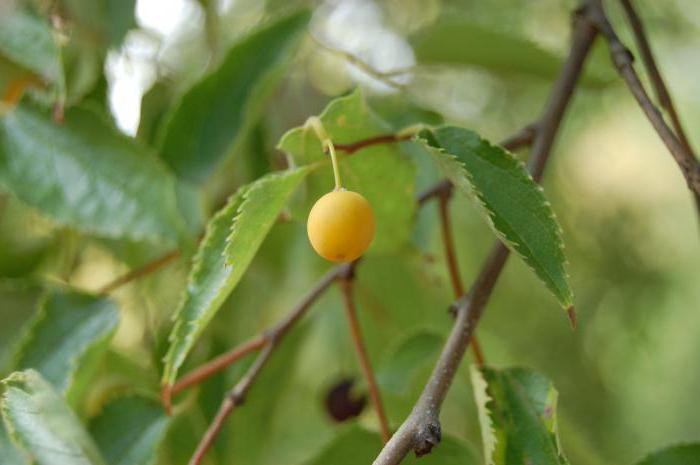
Use of fruits and leaves
The stone tree has edible fruits. In mature form, they acquire a dark purple color, almost black. The fruits have the shape of a small ball. In Israel, a national delicacy is made from these fruits. There are seeds inside the fruit. Of them produce a very useful oil, in composition resembling almond. Fruits are also ground into flour and a very tasty dish is made from it - "come" (porridge). Many owners in Armenia for the sake of these fruits are planted in gardens. Tannins, which are contained in the bark of this tree, are used to manufacture dyes for fabrics.
The leaves of the frame like to eat goats and silkworms. And the fruits are very fond of pecking birds.
How is used in the household
Stone tree is a good decorative material. Today, many bonsai trees of this species have been developed, which live well in indoor conditions. After all, the frame is very resistant to air pollution. It has a greenish-yellow wood, which is very dense and hard, well-suited to polishing. Various souvenirs, canes, musical instruments and many other wooden products are made from it. 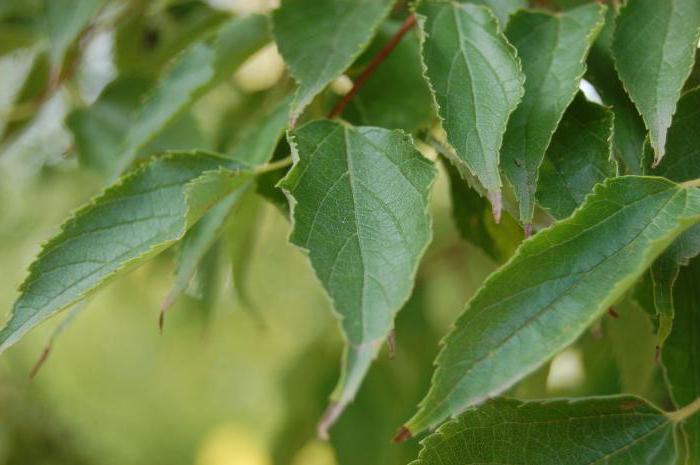
South frame in medicine
Stone tree has good healing properties and is widely used in medicine. It contains elements of organic acids, tannins, pectin, dyes, sugar, oil, many vitamins, mineral salts. Broths are used from the roots and fruits of stony wood, which are used to treat diarrhea and dysentery. They also strengthen the cardiovascular system, increase the protective functions of the body. To prepare such broths, fruits and roots are harvested in advance: the berries - after ripening, and the roots - before the growing season. 
What is famous frame
Stone tree is famous for its extraordinary properties. It is very well appreciated for its heavy and dense wood. It is characterized by flexibility, elasticity, strength, hardness, so it has long been widely used in construction. Many have heard of the mausoleum of Sultan Sanjar, so it was built in the XII century (Turkmenistan) from the southern framework.
Many peoples in ancient times liked to wear various talismans and amulets. In many Central Asian countries such miraculous things were made of stone wood. They were worn around the neck or hung in the dwellings. It was also believed that the pieces of wood in the frame have magical power, they guarded against evil forces and bad eyes. Such pieces, or "Dagans", were hung over the entrance to the house or at the gate.
Stone tree is not very demanding, it is easy to grow. In some areas of Israel it is considered sacred, it is used in many areas. They make beads from the fruit of the frame and put them on the neck of children or animals. This is considered a good sign that protects against adversity. 
Boxwood - Stone Tree
Very ancient is boxwood. But few know that this plant is also called the stone tree. Shorn bushes of boxwood met in ancient Roman times. But the stone tree boxwood was named because of the exceptional density of its wood. After all, this is a long-lived, can grow up to half a century. From it make hedges, various fancy and geometric shapes. More hardwood than boxwood, not found on the European continent. They make small dishes, chess figures, various small parts for instruments, pipes for smoking. Boxwood wood is highly valued.

